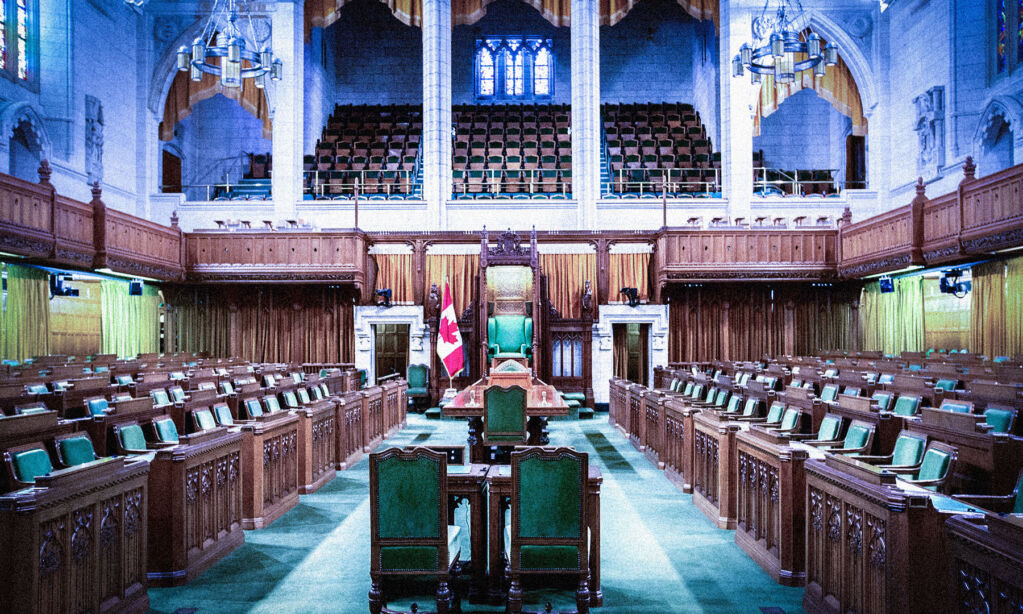As members of parliament resume work in the House of Commons, our team of experts will be watching closely and pressing for urgent solutions to the problems that plague us.
The ongoing impact of COVID-19, inflation gnawing at stagnant paycheques, a health care system squeezed to the limit, the climate crisis, and the ongoing need to dismantle colonialism and systemic racism. Will the federal government rise to the challenge?
Here’s what we’ll be monitoring.
A robust answer to the affordability crisis
The federal government has announced a fairly decent mix of anti-inflation measures targeted to lower-income Canadians. These include a plan to double the GST credit for half the year, introduce a new dental care benefit for families with kids under 12, and provide a one-time $500 payment for low-income renters. These are important investments and could provide $2,300 for a low-income family of four, if that family qualified for all three benefits. — David Macdonald
A national child care program that delivers
On this file, the train has left the station. The budget measures have all been approved and the money has been sent to the provinces. There are plenty of actual fee reductions, of 25% to 50%, that parents across the country have already seen in their licensed child care fees. Many provinces, like Ontario, will have a second fee reduction at the end of 2022 to get to the full 50% fee reduction promised. This has nothing to do with the federal government, only with differing provincial implementation plans. What I’ll be watching for in the fall and winter sessions is any new support for the sector. What will be increasingly obvious in the sector is that low fees will drive up demand. Child care worker jobs are generally pretty low paying and workforce issues will be severe in the coming years. The federal government is well aware of this issue—let’s hope it will rise to the challenge. — David Macdonald
An affordable housing strategy that includes renters
The high price of buying a house is going to continue to be top of mind going into the fall. Yes, house prices have fallen as mortgage (interest) rates have risen, but they’d have to fall by another third in Toronto (for example) just to get back where they were in 2019, which itself wasn’t very affordable. That may well happen if interest rates continue to rise. The issue for those buying a house is that they may not be much better off with lower house prices, as those will be offset by higher mortgage rates, which may mean monthly payments remain relatively unchanged. Falling house prices may well displace affordable house prices as the key housing narrative.
None of this has anything to do with affordable rental housing with average rents going up 5% in the past year. The $500 top up to Canada Housing Benefit recipients announced in the spring budget looks like it will be paid in the fall. The biggest benefit for renters at this point is actually provincial moves, like the B.C. move to limit rent increases to 2% despite inflation at 8%. Rent makes up a decently sized proportion of the CPI and if the provinces allow only smaller increases, then they help to constrain inflation.
Will post-secondary education policy here react to “the Biden effect”?
The Biden administration’s recent decision to forgive a significant portion of student debt in the United States has revitalized the conversation in Canada about how and to what extent we invest in post-secondary education, and the debt that students and their families are expected to bear as a result of reduced federal funding and differing levels of provincial commitment.
The American debt numbers are eye-popping, but so are Canada’s: an accumulated $22.3 billion federally; and half of all students graduate with debt (an average of $28,000 for university and $15,300 for college, all sources). Women are more likely to carry over $30,000 in debt, and—no surprise—students from low- and middle-income families are likely to carry more debt. Perhaps more alarming, a quarter of all federal student loans are in some form of difficulty.
Rising tuition and other fees—as institutions have moved towards a user-pay model—and other expenses that continue to increase are contributing to the student debt crisis, the effects of which are significant and can last beyond the repayment period. Debt creates individual and collective economic and social drag, which is most keenly felt by those who can least afford it. It means less disposable income to spend in local economies, can trap graduates in the cycle of precarity, and reinforces intergenerational inequality.
Federal debt forgiveness would be the first step in acknowledging the failure of a payment model that contributes to significant affordability concerns for students and families. But the source of the problem must also be addressed: almost without exception, tuition fees and other user fees continue to increase. Successive governments have chosen a piecemeal approach and prioritized delayed repayment rather than implement a comprehensive strategy that addresses accumulated debt and eliminates the regressive user-pay model. Fiscal capacity can be created: a modest wealth tax of 1-3% on the very richest Canadians could net $28 billion in year one and $363 billion over a decade. But it’s a question of priorities. — Erika Shaker
A recession-proof Employment Insurance and income support plan
The risk of recession is now in clear sight as the Bank of Canada pursues a course of aggressive interest rate hikes designed to wrestle inflation to the ground, at the potential cost of hundreds of thousands of jobs. The August labour force survey is already revealing a worrying increase in the unemployment rate. At the same time, the temporary Employment Insurance (EI) measures brought in to help workers navigate the economic fallout of the COVID-19 pandemic are slated to expire on September 24. Two-and-a-half years later, workers are confronting economic turmoil with a tattered EI system that’s not up to the task.
For many years now, EI benefits have only been reaching four out of 10 unemployed workers. We can’t afford to go back to the days of old. This fall, we’ll be looking for a new EI program—one that establishes a new lower threshold of 360 hours or 12 weeks for all EI benefits across the country. This would ensure that all workers who contribute to the program will be able to access needed income support and training when they lose a job or need to recover from an illness or provide care for a family member.
A renewed EI program should also adopt a standard of at least two-thirds (66%) of the claimant’s normal earnings—like Canada did in the past. It should raise the maximum insurable earnings level and set a liveable benefit floor of $450 a week. This last measure would significantly enhance income security of the working poor—those most at risk of the pending economic downturn.
The need to improve our EI system is urgent. We cannot wait for the next pandemic, the next climate crisis, or the next recession to put our income security house in order. (For a full list of our recommendations, see our Alternative Federal Budget 2023, which will be published September 22).
People with disabilities have been waiting a long time, too. Since February 2020, people with disabilities have borne the full brunt of the pandemic. As low-paid workers in hard-hit sectors, they were significantly impacted by employment loss and the drop in household earnings. As the largest group forced to subsist on welfare benefits that fall far below the poverty line, they are largely forgotten and ignored in the pandemic response.
The federal government is working on a new Canada Disability Benefit but it can’t come soon enough. Such a benefit has the potential of lifting working-aged people with disabilities out of poverty, while redirecting critical funding to provide much-needed community support services. The CCPA has provided one example of how such a benefit could work in the Alternative Federal Budget. What’s essential is that people with disabilities lead the reform efforts. — Katherine Scott
A health care strategy that addresses glaring problems
One of the requirements of the NDP support of the minority liberal government was dental care for kids before the end of the year. This was terribly ambitious, but deadlines focus the mind. In the end, having a full dental insurance system by the end of 2022 was a bridge too far. Instead, the program will just be a cash transfer of $650 per child per year (for the next two years), at which point a proper insurance system will be set up (the sort where you get reimbursed for actual amounts spent). Still, there are plenty of questions as to how this will work. The federal government could make this easy by relying on attestation like they did for the Canada Emergency Response Benefit (CERB) or they could make it hard, like a complicated application process. The details will set the tone for this entire program as it's rolling out over the coming two years.
The new dental care plan is a bright spot in what is an increasingly fraught debate about the future of the health care system, drained and strained by years of austerity, now pushed to the breaking point after two plus years of COVID-19. The provinces and territories are lobbying hard for increased federal funding. The federal government has promised support. We’ll be looking at what form that takes and what conditions, if any, are attached. If the pandemic has taught us anything it’s that you can’t buy change without an understanding of what you’re buying.
Severe staffing shortages—notably among nurses and personal support workers—have blown the health care system apart. This summer, hospitals have been forced to temporarily close for periods of time, unable to properly staff emergency departments and critical care units. This is part of a larger crisis in the care economy. Across the country, home care agencies, community living associations, long-term care homes can’t find needed staff and are having trouble hanging onto the ones they’ve got.
This fall, two new long-term care standards are being released, setting out expectations for the long-term care sector to provide quality care. We’ll be hoping that the government delivers the promised Safe Long-Term Care Act to ensure that these standards of care are upheld across the country, along with the funding needed to drive transformative change. This includes funding to train additional workers, to boost their low wages and address poor working conditions.
It is simply impossible to enhance care and support for vulnerable seniors, young children, people with disabilities, all who need care, without addressing the conditions of work in the care economy.We’ll be looking for bold public leadership to tackle the crisis in Canada’s care economy head on. — Katherine Scott
A climate change strategy that treats it like it is: a crisis
In a pattern that has become disconcertingly familiar, summer 2022 delivered a fresh wave of record-breaking climate disasters around the world. This year attention was turned toward apocalyptic flooding in Pakistan and 40 degree temperatures in the United Kingdom, but Canada, too, suffered its requisite share of calamity. Among other crises, Ottawa was flattened by an uncharacteristic “derecho” storm and Vancouver once again experienced the worst air quality in the world due to out-of-control wildfires.
Yet don’t expect the fight against climate change to be front and centre in the upcoming parliamentary session. For one, pocketbook issues like inflation and the housing crisis are understandably top of mind for Canadians (even though, ironically and unfortunately, climate-related disasters underpin a significant share of recent inflation). For another, since releasing its long-term Emission Reduction Plan in March, the federal government has been more focused on implementing its climate plan than proposing new policy ideas.
One of the most important policies currently in the implementation phase is a proposed cap on emissions from oil and gas production. A well-designed cap could drive production cuts that substantially reduce emissions from Canada’ most polluting industry. The oil and gas industry, however, is already hard at work lobbying to water down the plan.
Another long-awaited commitment is the introduction of just transition legislation, which would support the workers and communities most impacted by the transition away from fossil fuels. The legislation was first promised by the Liberals in 2019 and its passage was named by the NDP as a condition for supporting the current government. Consultations toward the legislation began in 2021 and wrapped up this spring, though the government has yet to release its promised “what we heard” report. Nevertheless, it is possible we will see draft legislation in the coming months.
In lieu of new policies, what we really need from this parliament is a willingness to keep climate action in focus when developing policy in other areas. Governments must resist the temptation to attack problems like high fuel and home prices with short-term solutions, such as cutting gas taxes or promoting urban sprawl, that aren't compatible with deep decarbonization in the long term. — Hadrian Mertins-Kirkwood
A rethink and renegotiations of trade deals
International supply chain disruptions from the pandemic, Putin’s war on Ukraine, and Western sanctions against Russia have hit pocketbooks hard. Insidiously, the situation is not without its upside for the Canadian economy.
Large increases in the value of Canadian exports since January 2021, notably of energy (crude and bitumen), unwrought metals, fertilizer and agricultural commodities, fed large federal and provincial budget surpluses this summer. Some economists predict the federal deficit, which hit $95.6 billion in March, may be erased come December. Inflationary “perks” aside, fundamental transformations to global value chains, and to trade and climate policy priorities among Canada’s allies, will make it hard for the federal government to rest on its laurels.
This fall, I’ll be watching for the release of Canada’s Indo-Pacific Strategy to see how it compares with the Biden administration’s 14-nation Indo-Pacific Economic Framework for Prosperity (IPEF). The U.S. hosted a first ministerial meeting of IPEF countries this month, laying out four “pillars” of collaboration with a group of Asian nations excluding China on supply chain resilience, labour standards, climate change, and market access for U.S. digital services and agriculture.
While the geopolitical risks of destabilizing China are considerable, the emphasis in the IPEF on decarbonization, supply chain transparency and access to decent work distinguish it from boilerplate neoliberal trade deals that pay lip service to these things. Having enhanced the role of the state in directing investment toward “clean” technology through the Inflation Reduction Act of 2022, the Biden administration is looking for “friends” to reinforce, and perhaps share in, the benefits. Canadian business lobbies, worried about lost foreign investment to the U.S., are begging the Trudeau government to join the IPEF.
It’s not at all clear that will be an option. In any case, Canada jumped the gun on its promised Indo-Pacific Strategy by launching boilerplate neoliberal trade negotiations with Indonesia, India, and ASEAN at the end of 2021. Foreign Affairs Minister Melanie Joli only created a civil society advisory committee to inform the strategy after Canada’s trade negotiating mandates for the region were set. That’s a fairly big part of the conversation already decided.
The bigger question may be how far Canada’s strategy will resemble the sinophobic, Cold War–like U.S. emphasis on decoupling from China. Canada finally banned China-based Huawei from our 5G network in May, as requested by Washington. But there is pressure on the federal government to “reset” relations with the world’s second largest economy following the release of the two Michaels a year ago this month. The Trudeau government is clearly open to doing business with pariah regimes. The U.S. IPEF excludes the murderous coup regime in Myanmar; Canada’s ASEAN free trade deal does not. It would be hard to justify shunning China based on those low standards.
In a more upbeat development, we might see a request this fall from Colombia’s new president, Gustavo Petro, to re-open the Canada–Colombia Free Trade Agreement (CCFTA). Petro promised to renegotiate Colombia’s trade deals during his election campaign. The CCFTA is a NAFTA clone that has hammered Colombian farmers with import competition from cheap North American crops while punishing the Colombian government, via investor-state disputes, for trying to protect the environment. We should welcome a new deal with our Latin American neighbours. — Stuart Trew















